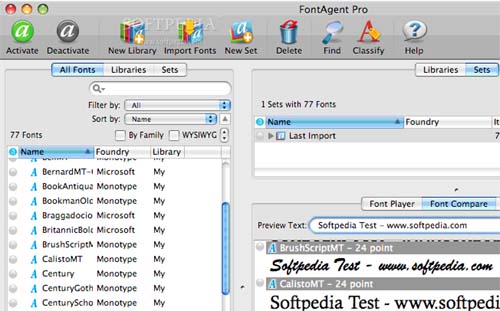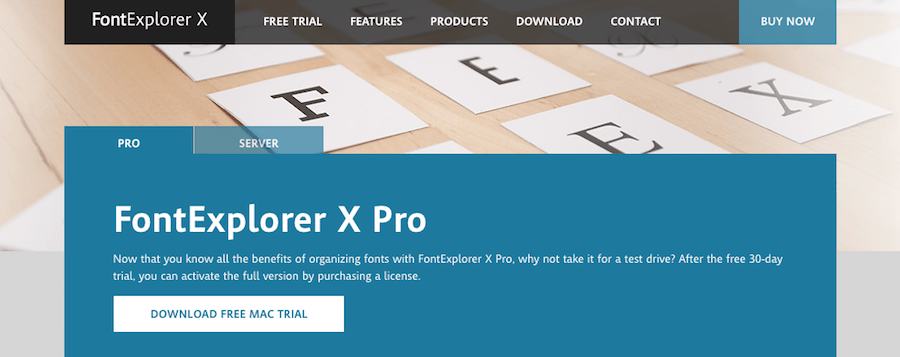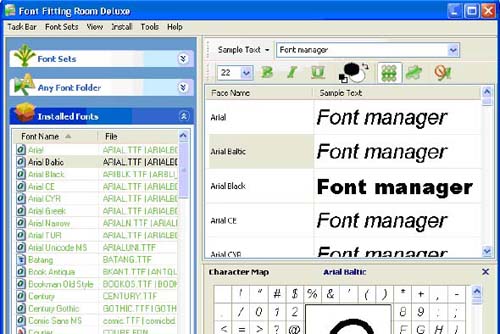
- Best font manager with auto activation install#
- Best font manager with auto activation serial#
- Best font manager with auto activation update#
- Best font manager with auto activation upgrade#
Best font manager with auto activation serial#
In addition to telnet, ssh, and rlogin, ZOC supports direct serial connections, modem dialing, and named pipes. Offers a thumbnail view of all session in thumbnails and type commands to all sessions at the same time.
Best font manager with auto activation install#
I activate a font and it stays activated until the end of time or until I deactivate it. Can view and send to all sessions at once. NexusFont has a unique auto-activation system that allows users to install their fonts instead of installing them. It has this really nice feature I like to call “not screwing with my font selections”. When I’m working at home, though, I don’t have this problem, because there I use the font manager of my choice-FontExplorer-which I chose because it was free. 6) Has a vault option if you prefer to store copies of fonts that have been added. 5) Lets you decide which font to activate or keep active when opening a conflicting font. 4) Font Sense technology virtually ensures auto activation will open the correct version of a font. In the meantime, activating fonts by hand is becoming a real time-suck and making it hard to stay focused. 3) Has a reliable automatic font activation feature.

Best font manager with auto activation upgrade#
But it’s a problem we’re only going to have to deal with when we upgrade software. My company upgraded our Adobe suite to Creative Cloud and now it appears Auto-Activation isn’t going to work until we upgrade to Fusion 4. The best professional font managers can ensure a smoother workflow by identifying, locating, and activating the exact fonts you need for all your projects.

It has a “permanently active” feature, which would make me a lot less reliant on auto-activation-if only it worked, which it doesn’t.Īuto-activation always did work for me and didn’t really cause any problems … until now. Basic font managers don’t offer font auto-activation. At my work, I’m shackled to Suitcase Fusion 3 and auto activation comes in very handy only because Fusion doesn’t keep your fonts activated. If it breaks, you should sigh and say, in your best imitation of Eyeore, “I knew it wouldn’t work.” If you use auto-activating fonts, you need to set your expectations lower: If it works at all, you should be grateful and amazed. Often, things completely unrelated to fonts go wrong, and it’s only after hours of troubleshooting that people realize that it was the auto-activation plug-in all the time. Everytime InDesign or the operating system gets upgraded, even a tiny bit, it seems like the auto-activators break, which causes a new series of emails and forum posts and hair-pulling and sturm und drang. It’s simply that font activation just never ceases to be a problem. It’s not that I don’t like the idea of having some software take care of this for me. Just as I wouldn’t want my television to turn channels on and off for me (I only really watch The Daily Show and The Backyardigans anyway), I take the responsibility of turning fonts on and off myself. It’s their fault.Īnd since I’m at it, and I’m feeling crabby, I should add: While I have used a wide variety of font managers in my day, I don’t use auto-activation in any font manager.
Best font manager with auto activation update#
We’ve been getting a number of emails about fonts recently, and I suddenly feel compelled to say: All questions that involve the phrase “auto activation” have the same answer: Go update your font manager and its side-kick font-activation plug-in.


Do you know if there was ever a fix for this problem? Just don't change the default font to something like Wingdings, lest you render your system completely unreadable.I was just reviewing a blog speaking about how when using Suitcase in conjunction with InDesign files placed into InDesign files, the fonts won’t auto activate. Restart your computer to see the font change applied across Windows 10. Change the "Save as" type to "All Files."ġ0. You might have to open your Fonts folder (search for "fonts" in the Windows taskbar) to get the full, correct name of the font.Ħ. Replace Verdana in the last line with the name of the font you want to use as your system default. "Segoe UI Semilight Italic (TrueType)"="" Open Notepad and copy and paste the following into it:


 0 kommentar(er)
0 kommentar(er)
